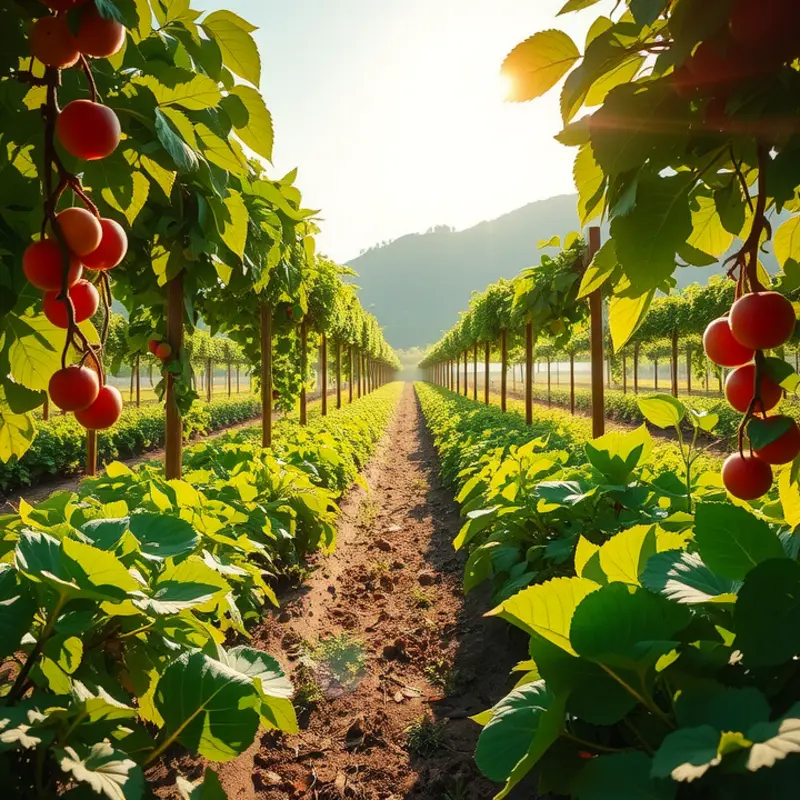Navigating the world of food labeling can be daunting, particularly for those who prioritize sustainability. As consumers become more eco-conscious, understanding what labels signify is crucial to making informed choices. This guide breaks down sustainable food labels, empowering individuals to support environmentally friendly practices while shopping. By making educated choices, you contribute to a healthier planet, promote sustainable agriculture, and support ethical farming practices. Discover how to decode common labels, identify credible certifications, and make choices aligned with your values.
Understanding Sustainable Food Labels

In the quest for sustainability, food labels serve as helpful guides. They reflect commitments to environmentally friendly practices, animal welfare, and organic agriculture. However, deciphering these labels can be challenging. Understanding key terms and certifications can aid in making informed choices.
Organic: A staple among sustainable labels, organic certification indicates that foods were produced without synthetic fertilizers, pesticides, or genetically modified organisms. Organic farming promotes biodiversity and soil health. Yet, standards can vary by country. Verify the certifying body to ensure adherence to recognized organic standards.
Fair Trade: This label focuses on ethical supply chains, ensuring farmers and workers receive fair wages and safe working conditions. It promotes sustainable farming and production by offering better trading conditions. Fair Trade products support community development projects in producing regions, but not all legally compliant products are Fair Trade certified, making this label critical for ethical purchases.
Grass-Fed: Primarily seen on meat and dairy, grass-fed indicates animals were raised on a diet based largely on natural grasses, which aligns with their natural diet. This method can benefit both the environment and the nutritional content of the products, offering higher omega-3 levels. However, it’s crucial to seek additional certifications, as the term isn’t heavily regulated in all areas.
When evaluating labels, it’s essential to distinguish between those backed by third-party certifications and those created as marketing tactics. Trustworthy labels usually involve a third-party verification process and comply with stringent standards. Look for recognizable names such as USDA Organic or Fair Trade Certified.
Critical certifications include Rainforest Alliance, which assures sustainable agriculture that protects ecosystems and supports biodiversity, while ensuring social equity. Another is Marine Stewardship Council (MSC), which guarantees seafood is sourced sustainably with minimal impact on a given ecosystem.
Learning to identify and trust these standards empowers eco-conscious consumers to make choices that reflect their values. Keep an eye out for resources that offer detailed insights into various labels and their meanings. For example, explore tips on eco-smart kitchen storage to further broaden your sustainability efforts at home.
By distinguishing reliable certifications from mere marketing tactics, consumers can better support sustainable food systems. Knowledge of these labels not only aids personal health and ethical standards but also contributes to broader environmental goals.
Making Informed Choices at the Grocery Store

As our awareness of environmental issues grows, making greener choices at the grocery store has never been more important. Starting from understanding sustainable food labels can significantly impact your eco-footprint. Here’s a handy checklist of eco-friendly labels: look for certified organic, fair trade, non-GMO, and Rainforest Alliance certifications. These labels indicate that products were made following rigorous environmental and ethical standards.
Local produce is another vital element of sustainable shopping. By sourcing locally, you reduce the carbon footprint associated with transportation. Seek out farmer’s markets or check the labels in the produce section for local origins. This practice also supports local farmers, who often use more sustainable practices than large-scale, industrial agriculture.
Understanding seasonal availability is crucial. Fruits and vegetables grown out of season typically require more resources and energy, negating eco-friendly intentions. A seasonal produce guide can assist you in aligning your purchases with what’s naturally available.
Minimizing waste starts with smart purchasing. Buy only what you need to prevent food waste. Opting for bulk bins reduces packaging waste, enabling you to purchase the precise amount required. When perishable items are unavoidable, proper storage techniques can prolong their freshness. Resources such as eco-smart kitchen storage offer practical solutions for reducing spoilage.
Engage actively with your local food community. Some areas have community-supported agriculture (CSA) programs, which let you subscribe to regular deliveries from local farms. This not only gives access to fresh produce but also bolsters farmer support and promotes more sustainable practices.
Finally, consider your diet’s overall environmental impact. Plant-based diets generally have a lower ecological footprint. If transitioning fully seems daunting, start with a few plant-based meals per week. Every small choice adds up, making a meaningful difference over time.
By incorporating these strategies into your shopping habits, not only do you contribute to a healthier planet, but you also enjoy fresher, tastier, and ethically produced food items. Let your choices at the store reflect your commitment to the environment and support a sustainable future.
Final words
Embracing sustainable food labeling is a powerful step towards a greener future. By understanding the labels and certifications on food products, you become an informed consumer, supporting sustainable practices and promoting ethical food systems. Every purchase you make contributes to the well-being of the planet and the integrity of food production. As you shop, remember that your choices matter, and together, we can foster an environment that prioritizes health—both for people and the world we share. Stay engaged, continue learning, and champion sustainability in your daily life.








